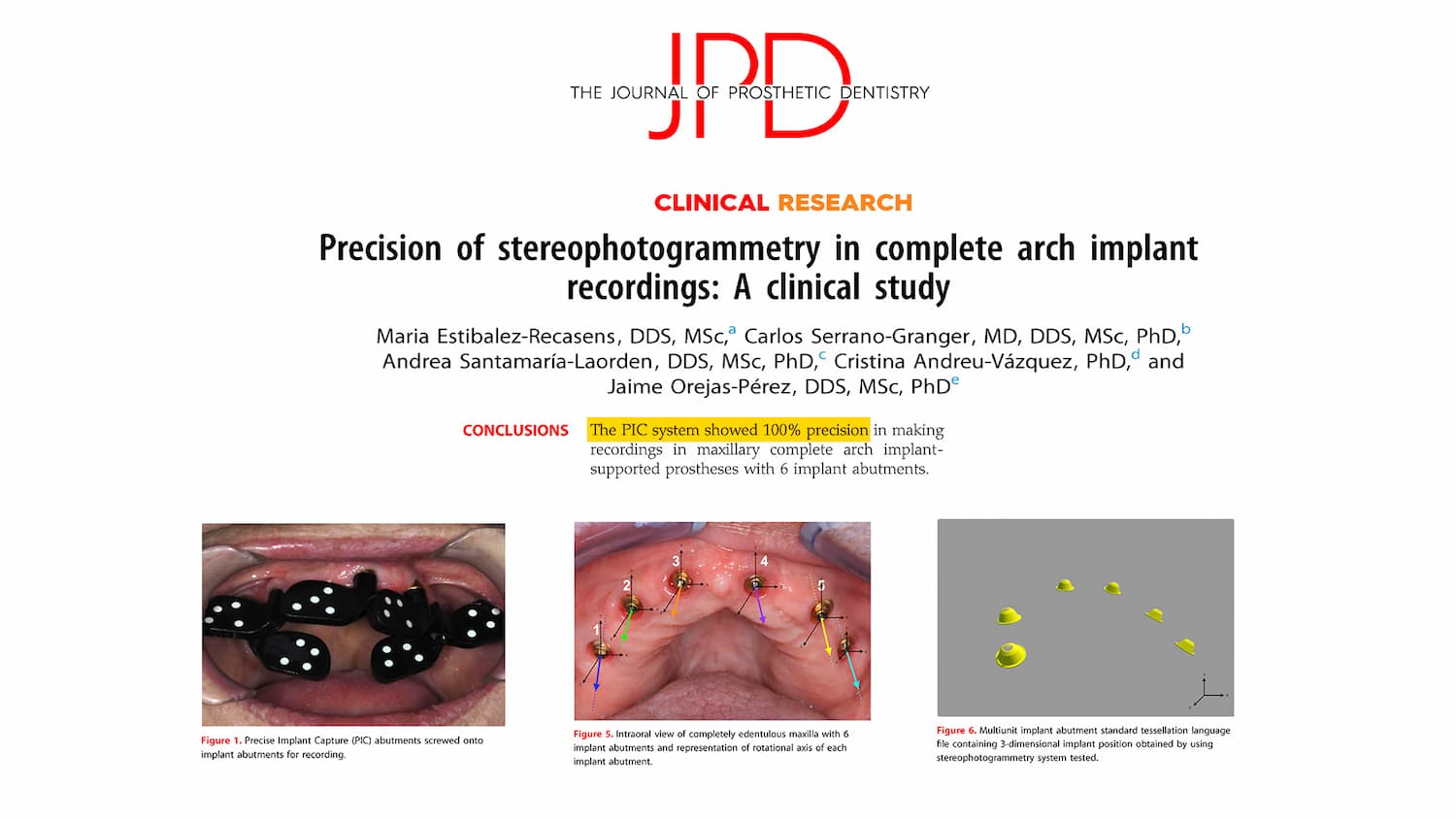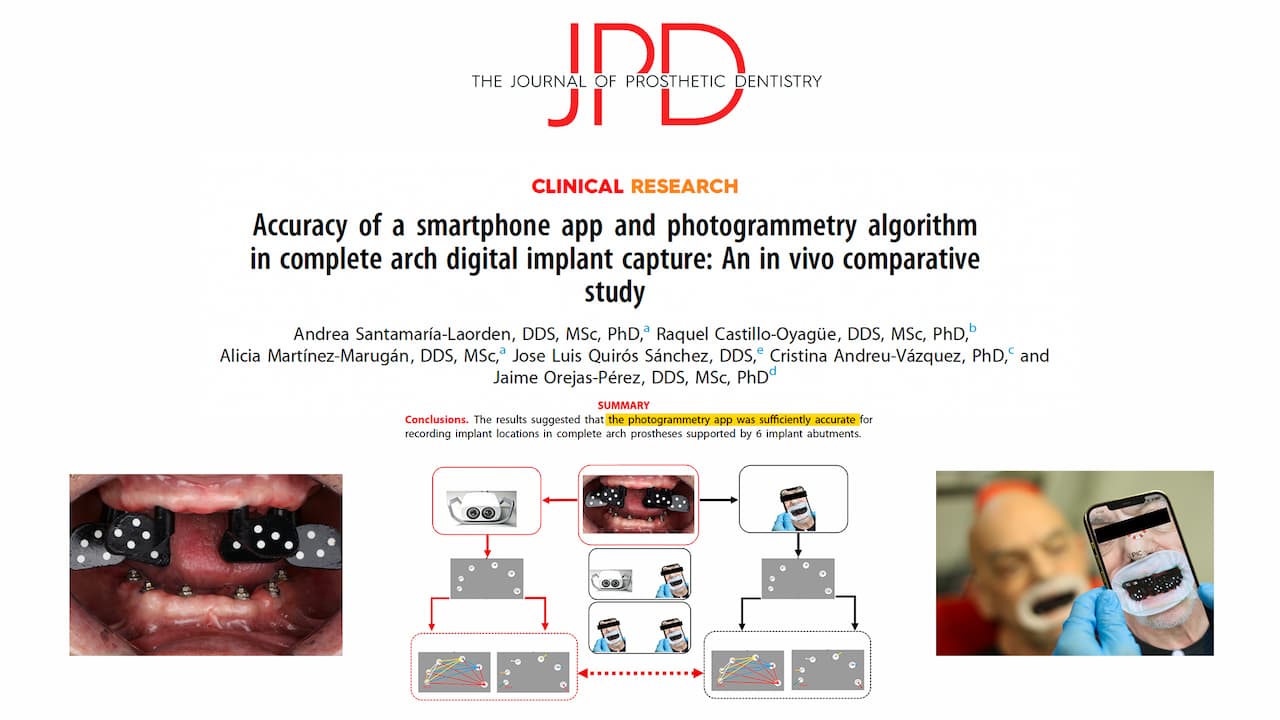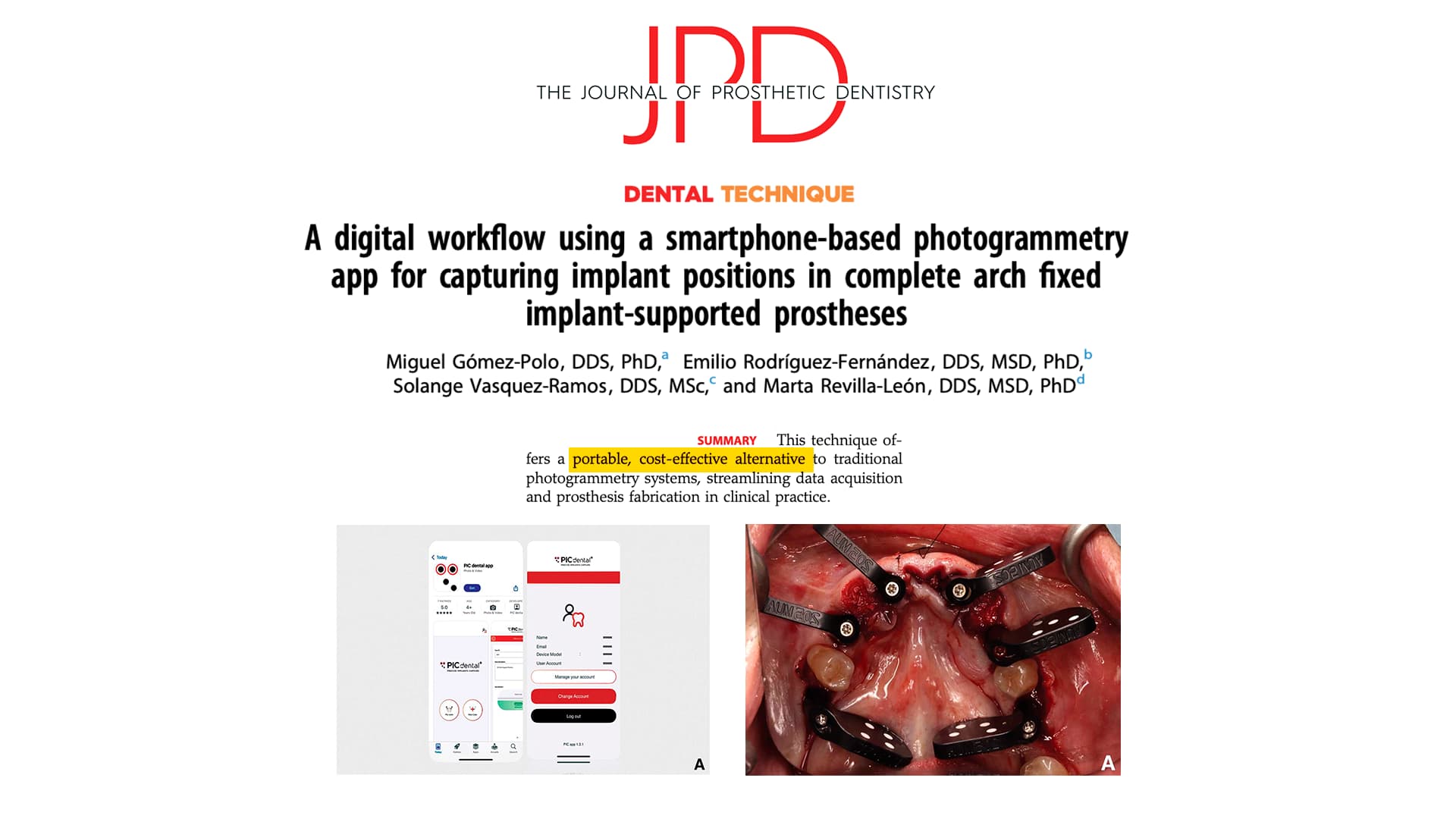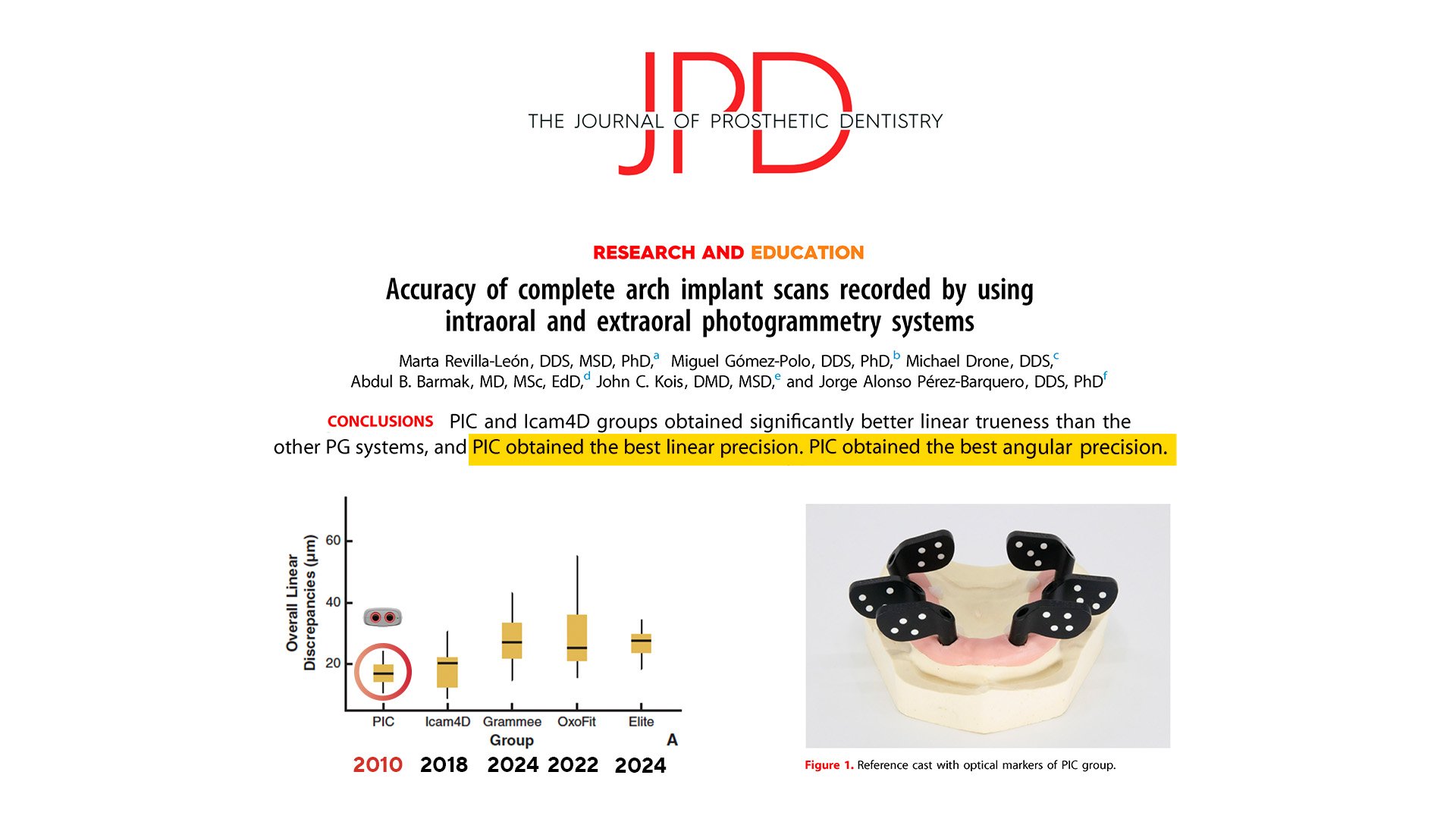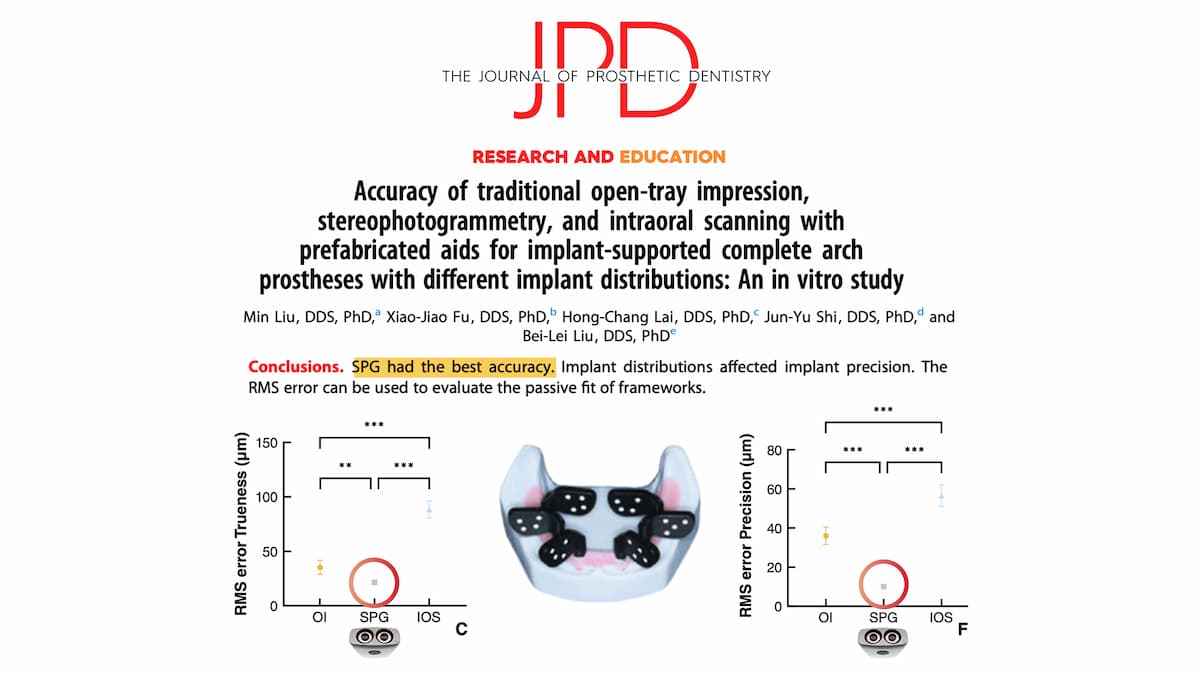Given the scarcity of in vivo studies, Dr. Estibalez-Recasens organized a team of researchers directed by Dr. Orejas-Pérez focused on testing the precision of PIC system following a methodology so far mostly used in in vitro studies.
The study, published this year in The Journal of Prosthetic Dentistry, took place at the European University of Madrid with a sample of 10 fully edentulous patients with full arch prostheses supported by 6 implants.
The results of the study conclude that PIC system guarantees “100% precision in making recordings in maxillary complete arch implant-supported prostheses with 6 implant abutments. Increasing the distance between implants did not affect the precision of the PIC system”.
These findings are even more relevant coming from an in vivo study. As Dr. Estibalez-Recasens and her team, led by Dr. Orejas-Pérez, emphasize, in vitro studies suffer from the lack of challenges associated with treating real clinical cases and unpredictable factors that arise during patient observation and treatment.
This study provides immeasurable value in validating PIC system as the gold standard for measuring full arch implants with the accuracy, trueness, and precision needed to ensure a passive fit.
Consistent and accurate results with PIC system in a large sample of edentulous patients
To verify the accuracy of PIC system, which has been confirmed in numerous prior in vitro and in vivo studies, they aimed to tackle the debate regarding how implant abutments impact the precision of digital registration techniques using stereophotogrammetry.
Intraoral scanners are influenced by factors such as edentulous spaces, implant depth, implant angulation, distance between implants, scan body design, ambient light, sensor size, stitching algorithm or scanning strategy. In contrast, PIC system provides three-dimensional implant positions and angulations without being affected by factors such as the operator, scan pattern, saliva, long edentulous spaces without anatomical landmarks and mobile soft tissues.
%20-%20Marzo/2025-03%20-%20Estibalez%20Recasens%20-%201.jpg) With this goal in mind, they gathered a total of 10 patients with multi-unit abutments on implants to perform a controlled study with 50 captures (5 per patient) made with a Legacy PIC system unit.
With this goal in mind, they gathered a total of 10 patients with multi-unit abutments on implants to perform a controlled study with 50 captures (5 per patient) made with a Legacy PIC system unit.
%20-%20Marzo/2025-03%20-%20Estibalez%20Recasens%20-%203.jpg) The study demonstrates how PIC system directly calculates and provides both linear and angular Euclidean distance measurements without the need for prior stitching of images or transformation of STL files into the 3D working model, thus avoiding possible errors in implant localization.
The study demonstrates how PIC system directly calculates and provides both linear and angular Euclidean distance measurements without the need for prior stitching of images or transformation of STL files into the 3D working model, thus avoiding possible errors in implant localization.
The measurements performed by the team gave a deviation of the PIC system's precision of 14.71 ±12.21 µm, agreeing with the results obtained in previous in vitro studies.
%20-%20Marzo/2025-03%20-%20Estibalez%20Recasens%20-%202.jpg?width=600&height=204&name=2025-03%20-%20Estibalez%20Recasens%20-%202.jpg)
PIC camera capturing images of PIC transfers in the mouth of one patient during the study
These figures even exceed the results of other in vivo studies with PIC system performed previously. According to the present study, the improved performance of the PIC system demonstrates that “its accuracy is not affected by factors such as oral conditions, the patient himself, implant distribution and arch length”.
We are excited to learn of the scientific community's evaluation of the PIC dental ecosystem, which yields highly accurate results even considering this study used the PIC system Legacy version.
Originally launched in 2010, PIC system Legacy is no longer on sale as of 2022, and has been replaced by a new generation of PIC system that features, among other new features, Micron Vision camera modules, which increase the accuracy of the system by 30%.
%20-%20Julio/2024-07%20-%20Scientific%20study%20Min%20Liu%20et%20al/Legacy%20to%20new%20PIC%20system%20formats.jpg?width=1200&height=382&name=Legacy%20to%20new%20PIC%20system%20formats.jpg)
In light of the successful evaluation conducted by Dr. Estibalez-Recasens and her colleagues, led by Dr. Orejas-Pérez, we expect even more spectacular results with the new PIC system models in the quality of treatment offered to real patients.
SOURCE
-
Orejas-Pérez, J., Serrano-Granger, C., Santamaría-Laorden, A., Andreu-Vázquez, C., Estibalez-Recasens, M.(2025). Precision of stereophotogrammetry in complete arch implant recordings: A clinical study. The Journal of Prosthetic Dentistry, 2024, Jul 11. https://doi.org/10.1016/j.prosdent.2024.12.021.
